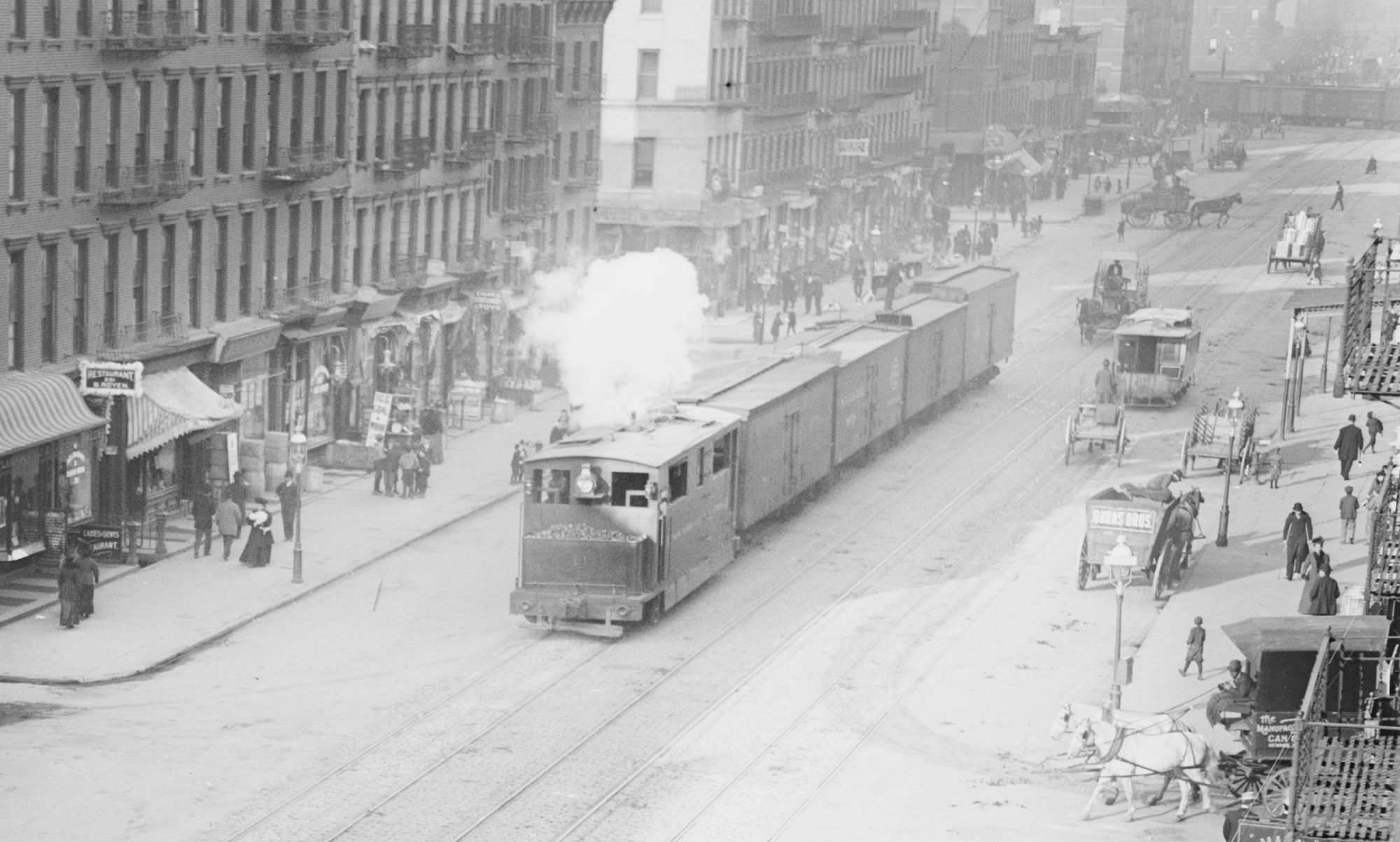Steam Rises from the Ground in Phantasmagoric Clouds

In this second edition of the NYC Microseasons project, we consider the spectral weather emanating from the winter streets.
New York City has risen up in layers, with old Belgian block roads covered with asphalt, cemeteries buried beneath parks, and retired wooden ships used as landfill to extend the shoreline and then forgotten as skyscrapers soared up from this artificial earth. Then there are the tunnels for subway lines that weave below the sidewalks and streets; a rumble under your feet recalls how close you are to these subterranean spaces. But often the other thousands of miles of infrastructure for electricity, communications, gas, water, and sewers are overlooked by those up above.
In winter we are reminded of one of these mysterious underground domains by an unnatural phenomenon. Plumes of steam can frequently be seen rising from the manhole covers—or the less atmospheric Con Edison orange and white chimneys. The city has the largest commercial urban steam system in the world, with over 100 miles of pipes and 2,300 manhole covers. From heating buildings to sterilizing hospital equipment, the steam system has been an essential part of the city’s life since the 1880s. The steam that creates apparitions of fog on the streets is usually from water hitting this system and transforming, rather than steam escaping the pipes. So when it snows or rains, overground steam sightings are more common.
If you see one of those misty clouds wafting up from the Manhattan pavement, take a moment to watch, notice how it makes a winter’s evening cinematic as people walk by, moving quickly to somewhere warmer. The headlights from taxis and lights from an office where someone is working late become phantasmagoric. And when you are back home, think of the elaborate systems down below that are powering your small haven in this dense city environment of centuries of change.

- Before electrification, steam locomotives powered much of NYC's mass transit including on the elevated lines. (Sadly a steam-powered monorail highly reminiscent of a Jules Verne submarine that was tested on the Boston elevated in the late 19th century did not have the same success.)
- A steam plant built in 1887 with steam generators installed in 1900 is still intact at Pratt Institute in Brooklyn.
- Your own clattering steam radiator was part of a design battle against airborne illness by encouraging people to open their windows to the fresh air, even in winter. Listen to its unique song; open the window; savor the air as the engineers dreamed you would.




